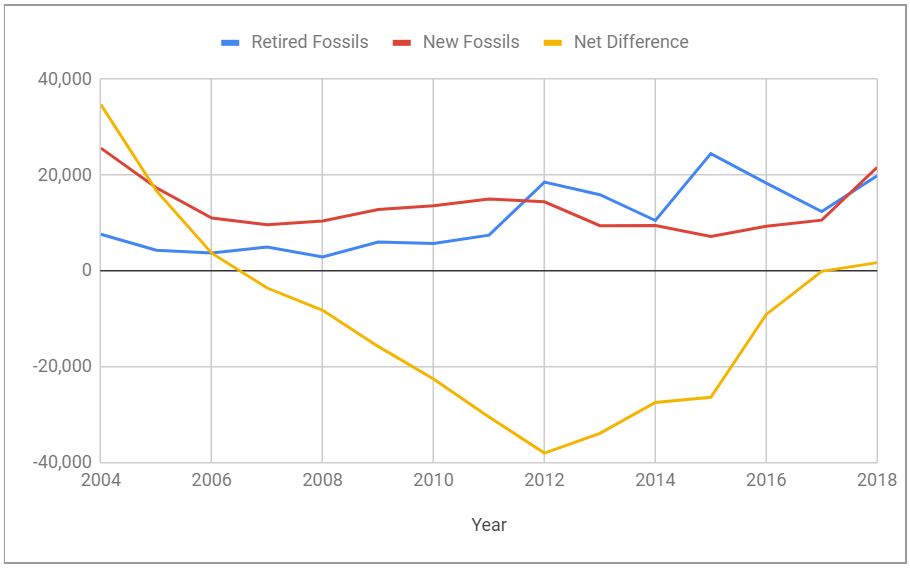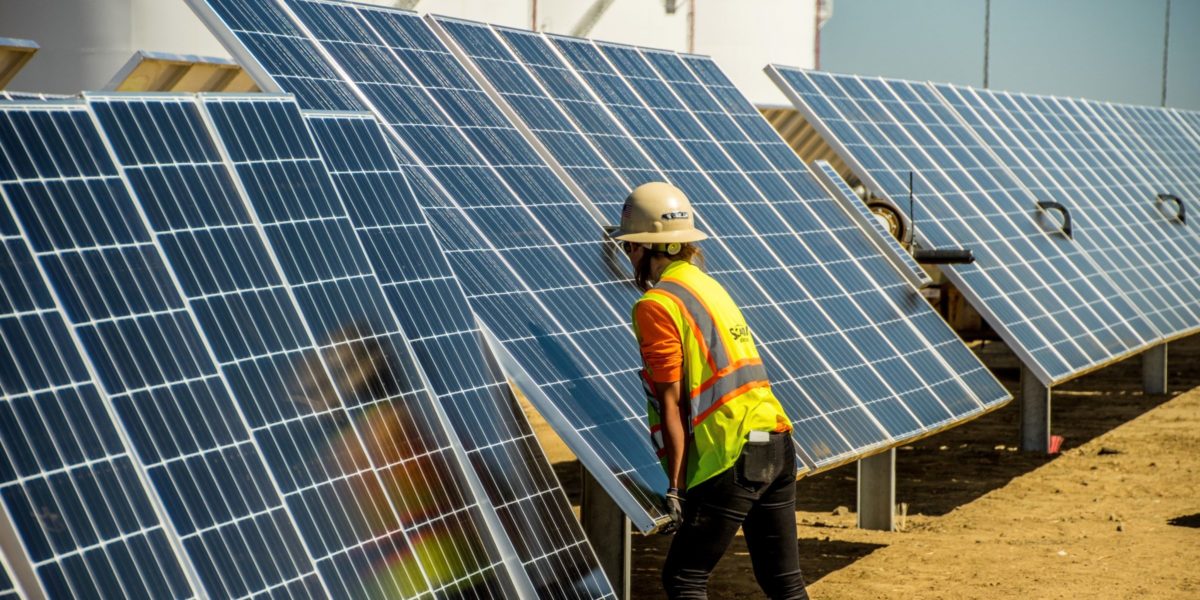The first step is admitting you’ve got a problem, and luckily most of us recognize that the massive amounts of CO2 we pump into the atmosphere cannot continue unabated if we want to keep our civilization. The second step is doing something about it, which is a bit tougher.
Since late in 2006, even accounting for growth in 2018, the United States has retired more fossil fuel electricity generation than it has installed. In total, going back to the beginning of 2007 – the United States has built 143,863 MWac of new fossil fuel-fired generation, and during the same period the country shut down 147,411 MWac of fossils.

In 2018, the United States did see a net increase in fossil generation capacity for the first time since 2011, however, that increase was only 1.75 GW of new capacity. 2015 saw the greatest net difference when just over 24 GW of fossils were retired versus only 7.2 GW in new additions.
Per Bloomberg New Energy Finance, we saw just over 11 GWdc of solar power installed in 2018, with the American Wind Energy Association saying 7.6 GWdc of new wind was installed as well.

Power capacity volume was collected from the December 2018 update of form EIA-860M, and the rough spreadsheet work on this data can be found in Google Sheets in the tab titled Net New Energy Since 2006.
During the period from the beginning of 2007 through end of 2018, when the total capacity of fossil stayed flat, we saw total electricity generation from these resources fall by more than 10%. This data can alsobe found in the above spreadsheet, on the tab titled Total Generation Chart.

Per a recent post by the EIA, ‘almost all power plants that retired in the past decade were powered by fossil fuels‘ (below image). Of the total retired capacity, coal power plants and natural gas steam turbines accounted for the highest percentages, at 47% and 26%, respectively. Most of the planned retirements through 2020 will also be coal plants and natural gas steam turbines, based on information reported to EIA.

And of course, all of this pullback in fossil fuel generation has occurred while nuclear power has slightly pulled back, hydro has stayed flat – and wind+solar have grown to just under 9% of total electricity generation. And oh yeah, this growth occurred during the longest economic expansion the United States has ever experienced.
This content is protected by copyright and may not be reused. If you want to cooperate with us and would like to reuse some of our content, please contact: editors@pv-magazine.com.








From ERCOT and FERC data I see proposed NG builds slowing down massively.
ERCOT:
NG:
Dec 2016: Total: 18.576GW, IA: 13.043GW
Dec 2017: Total: 13.969GW, IA: 10.088GW
Dec 2018: Total: 9.249GW, IA: 2.698GW
Feb 2019: Total: 10.529GW, IA: 2.784GW
Solar:
Dec 2016: Total: 13.724GW, IA: 2.019GW
Dec 2017: Total: 24.123GW, IA: 1.952GW
Dec 2018: Total: 40.732GW, IA: 4.337GW
Feb 2019: Total: 47.141GW, IA: 6.163GW
Wind:
Dec 2016: Total: 26.732GW, IA: 10.939GW
Dec 2017: Total: 30.198GW, IA: 8.720GW
Dec 2018: Total: 39.596GW, IA: 14.282GW
Feb 2019: Total: 37.420GW, IA: 14.663GW
(IA == has Interconnect agreement)
FERC:
NG proposals have dropped 23.529GW (Dec-Dec):
Dec 2017: current cap=517.10GW, add=92.708GW, retire=10.803GW
Dec 2018: current cap=527.69GW, add=69.179GW, retire=9.271GW
Jan 2019: current cap=528.19GW, add=69.206GW, retire=9.279GW
Solar:
in the same period solar proposals have gone up 23.833GW
Dec 2017: current cap=30.30GW, add=47.071GW, retire=0.002GW
Dec 2018: current cap=35.82GW, add=70.904GW, retire=0.002GW
Jan 2019: current cap=37.10GW, add=77.069GW, retire=0.002GW
Wind:
and wind has had more modest proposal growth of 17.685GW
Dec 2017: current cap=88.53GW, add=79.770GW, retire=0.068GW
Dec 2018: current cap=94.95GW, add=97.455GW, retire=0.000GW
Jan 2019: current cap=97.18GW, add=100.163GW, retire=0.000GW